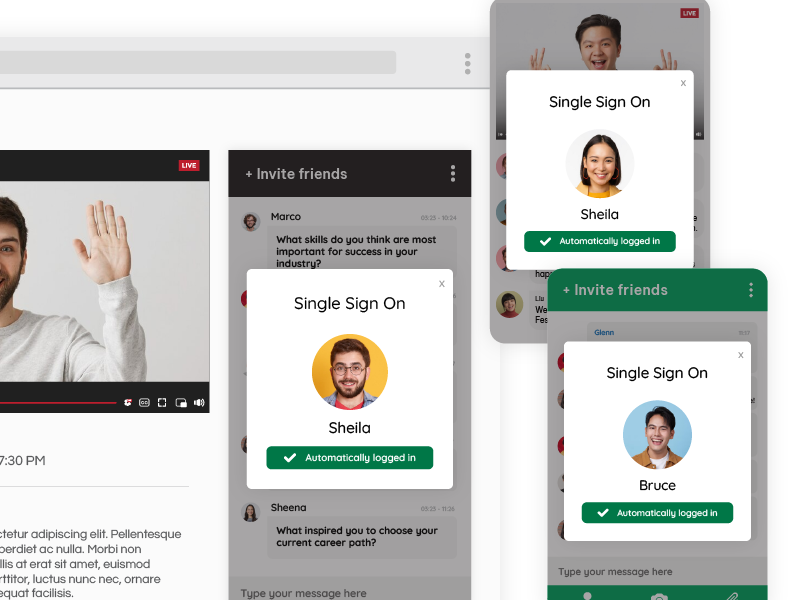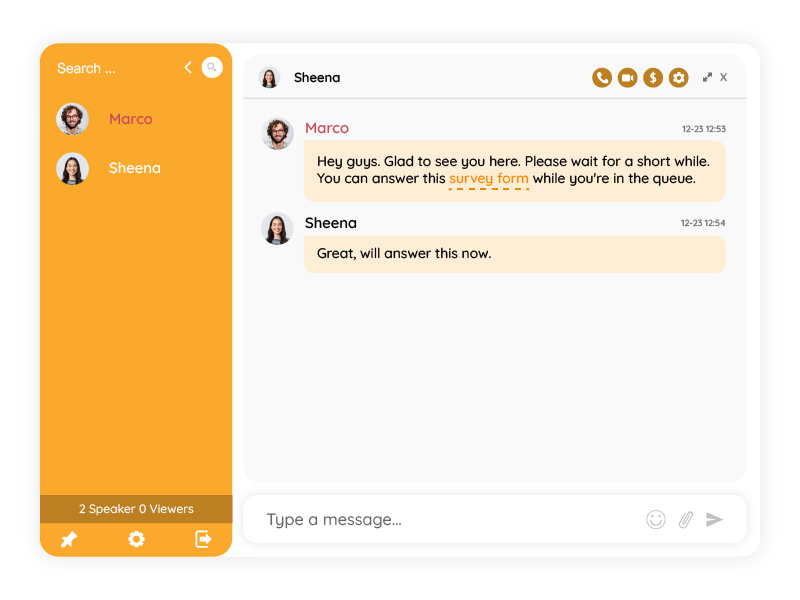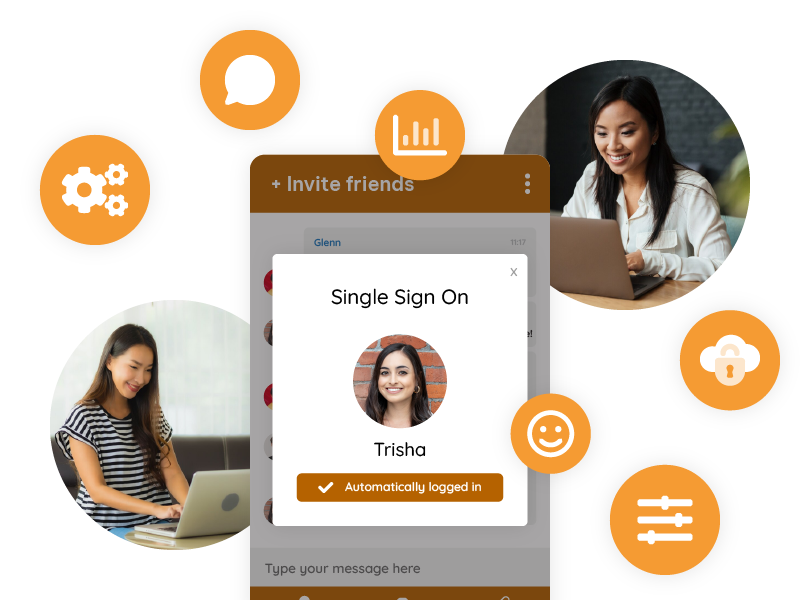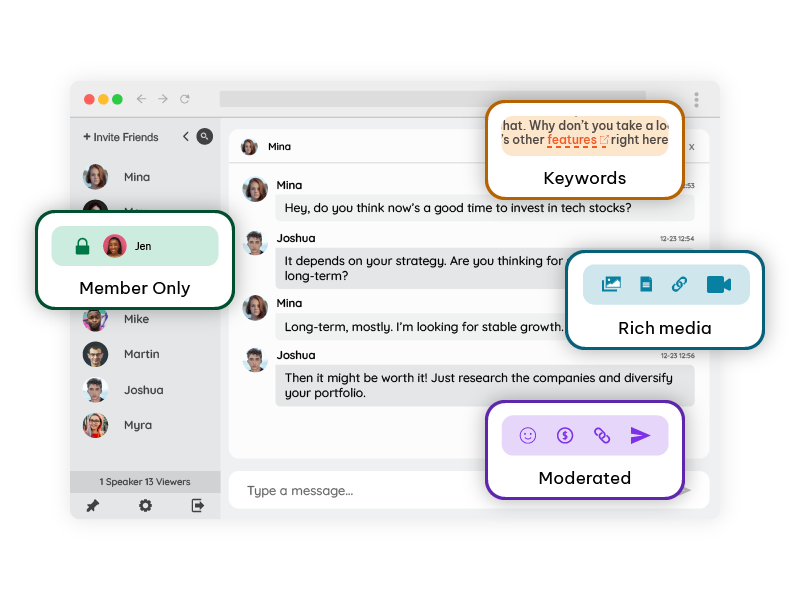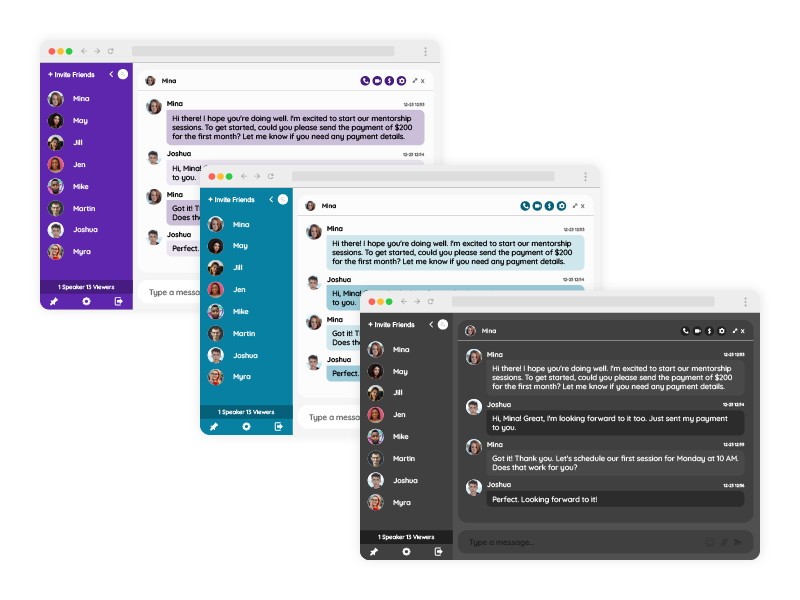When users ask about the best chatroom plugins for WordPress, they’re often looking for something simple: a real-time space where everyone can chat together, not just message an admin. However, not all chat plugins are created equal. In fact, many installed WordPress chat plugins can bog down your database and crash your website as traffic grows. Let’s explore the pitfalls of database-driven chat plugins and why a service-based plugin for WordPress is a superior solution for most use cases.
Before diving into the comparison, it’s important to define what we mean by service-based and hosted chat platforms.
Understanding the Two Chat Types
WordPress Service Based Chat refers to plugins that run entirely within your WordPress installation. They store chat data in your site’s database, and often rely on regular polling (usually every second) to check for new messages. These plugins are self-contained and typically require little to no third-party integration.
Hosted Chat Solutions are third-party services that manage all backend operations on external servers. They provide you with an embeddable chat widget or plugin, which communicates with the hosted service’s infrastructure. This setup offloads performance and maintenance from your WordPress server.
Key Comparison: Service-Based vs Hosted Chat
| Feature | WordPress Service-Based Chat | Hosted Chat Plugin |
|---|---|---|
| Performance | Offloads processing to external servers; more scalable | Can burden your server and database with high message volume |
| Installation | Quick embed or plugin integration; minimal setup | Directly installs via plugin; simple but may need server tweaks |
| Scalability | Scales easily with large volumes of users/messages | Limited by WordPress and hosting plan resources |
| Real-Time Messaging | Uses real-time protocols for instant messaging | Polling-based; can cause lag or delays |
| Security & Data Privacy | Data hosted externally; must comply with provider’s policies | Full control over data; stored on your own server |
| Customization | Customization limited to provider’s interface options | Fully customizable if self-hosted |
| Maintenance | Maintenance handled by the provider | Requires manual updates and monitoring |
| Cost | Usually subscription-based | Often free or one-time payment |
Why WordPress Service-Based Chat is the Better Option
One of the biggest challenges with hosted chat plugins is their reliance on your own server and database. As user activity increases, so does the number of database queries. A chat plugin that polls for new messages every second might seem manageable at first. But with 10 users, you’re looking at 600 queries per minute. For shared or budget hosting environments, this is unsustainable and can cause performance degradation or even crashes.
In contrast, service-based chat platforms offload all chat-related processing to external servers built for scale. Your WordPress site remains lightweight and responsive, even during traffic spikes. Service-based platforms also support real-time messaging using modern protocols like WebSockets, ensuring smooth and instantaneous interactions.
Hosted Chat Plugins: What You Risk
While hosted chat plugins give you full control over data and may offer deeper WordPress integration, they come with limitations:
- Server Load: Continuous polling adds heavy strain to your server.
- Scalability Issues: You’re restricted by the capacity of your web host.
- Technical Overhead: You’re responsible for maintaining the plugin, securing data, and troubleshooting issues.
- Lag and Delays: Polling introduces latency, especially as users grow.
For growing businesses or high-traffic sites, these downsides outweigh the benefits. Without proper infrastructure and ongoing maintenance, hosted chat becomes more of a liability than a feature.
Single Sign-On (SSO) and Chatrooms
A growing trend in modern web design is the integration of Single Sign-On (SSO) with chat platforms. SSO allows users to access the chatroom using their existing credentials from your website, ensuring a seamless experience.
Some service-based platforms offer easy SSO integration, making it possible to link chat access to your WordPress membership system. This is particularly useful for:
- Membership-based communities
- Online courses and virtual classrooms
- Webinars or live events
- Support communities
WordPress plugins that support SSO with external chatrooms typically provide a secure token exchange process, keeping authentication smooth and secure.
Integration and Ease of Use
WordPress Service-Based Chats are often easier to integrate than you might think. Most offer a plugin or embeddable script and come with user-friendly dashboards. They may not be as tightly connected to WordPress’s user system out of the box, but this is where SSO (Single Sign-On) comes into play.
SSO Integration: Many service-based chats support Single Sign-On (SSO), allowing users to enter the chat with their existing WordPress login credentials. This bridges the gap between external hosting and internal user management, giving you seamless identity integration while keeping performance optimized.
When Hosted Chat Might Work
There are specific scenarios where a hosted WordPress plugin may be sufficient:
- Small internal team chats with limited user activity
- Budget-conscious websites with light traffic
- Full control needed over user data and storage
Even then, it’s important to monitor performance metrics closely and ensure the plugin does not compromise your site’s speed or reliability.
Considerations for Choosing the Right Solution
When deciding between WordPress service based chat vs hosted chat, consider the following:
- Expected User Volume: If your chat is public or supports multiple users at once, go with a hosted solution.
- Server Resources: Limited hosting plans may not sustain chat plugins that poll frequently.
- Technical Expertise: Do you or your team have the ability to manage your own server and scripts?
- Customization Needs: Do you want full control over design and behavior, or is out-of-the-box functionality enough?
- Data Privacy: Are you comfortable storing chat data on a third-party server?
- Budget: Would you prefer a free plugin or are you willing to pay for long-term stability and features?
A Hybrid Alternative: Using SSO and WordPress Plugins with Hosted Chats
Live chat is no longer just a value-add; it’s an expected part of the digital experience. Choosing between WordPress service based chat vs hosted chat solutions comes down to performance, scalability, and ease of use.
While hosted chat plugins may seem attractive for their cost and simplicity, they struggle to keep up with real-time demands as your user base grows. On the other hand, WordPress service-based chats provide the tools and infrastructure needed for a smooth, professional, and scalable chat experience.
If your goal is to offer reliable, fast, and engaging communication without straining your WordPress environment, the clear winner is WordPress service-based chat.

